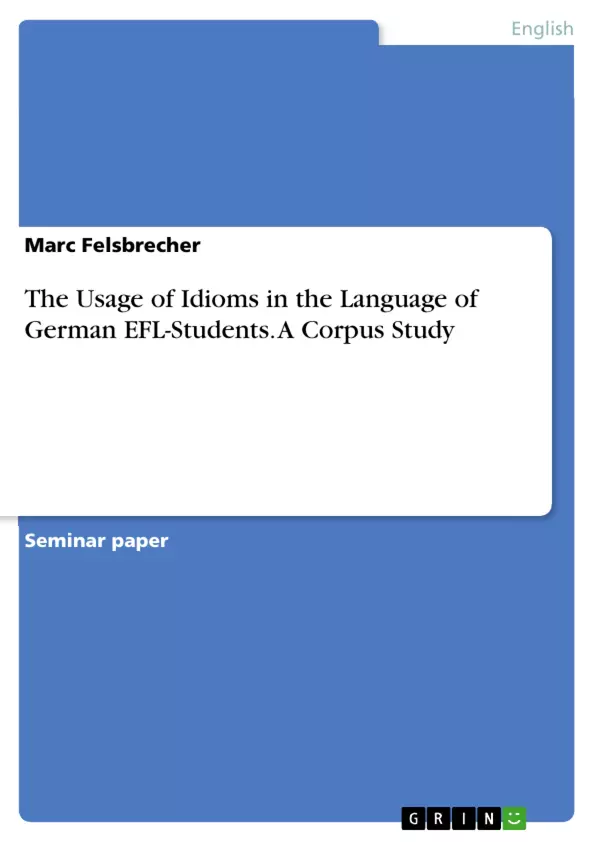Whereas a lot of research has been done on the description, comprehension and acquisition process of idioms, the field of idiom teaching to English second language speakers has remained largely undiscussed. Therefore, the aim of this short corpus study is to investigate the usage of idioms in the language of nonnative English speakers, especially in the language production of German English second
language learners (“ESL-Students”).
It is argued that ESL-Students in Germany do not use idiomatic language in their production of English, mainly due to the circumstance that idioms are not explicitly taught in the English foreign language classroom (EFL-classroom) and
because the language input in German English teaching classes is too artificial to pick them up unintentionally.
The first part of this paper will contain a definition of what idioms and idiomatic language are and shortly address the processes of idiom processing, comprehension and acquisition. A second part will contain a corpus study that will shortly examine the usage of idioms by ESL-Students in contrast to the idiom usage of native speakers in quantitative as well as in qualitative terms. The two corpora used will be the ICLE-German (“ICLE-GE”) and the LOCNESS corpus. The list of idioms that the corpora are examined for is taken from
English second language teaching textbooks currently used in German English classes.
The final part of this paper will discuss the question whether the teaching of idioms in German ESL-classrooms is successful (correct and rich usage of idioms by ESL-Students, almost native proficiency) or not (idiom usage in ESL-Students incorrect or low) and make suggestions for effective idiom teaching in the EFL-classroom.
Inhaltsverzeichnis (Table of Contents)
- Introduction
- Idioms - Definition, Comprehension and Acquisition
- Definition
- Idiom Comprehension and Acquisition
- Methodology
- Corpus Study
- Discussion
- Conclusion
Zielsetzung und Themenschwerpunkte (Objectives and Key Themes)
This corpus study investigates the usage of idioms in the language of German English as a Second Language (ESL) learners. The study aims to determine whether ESL students in Germany utilize idiomatic language in their English production, considering the lack of explicit idiom instruction in EFL classrooms and the potentially artificial nature of language input in German English teaching settings.
- Definition and comprehension of idioms
- Acquisition of idioms by ESL learners
- Comparison of idiom usage between ESL learners and native speakers
- Analysis of idiom usage in the context of EFL teaching practices
- Suggestions for effective idiom teaching in EFL classrooms
Zusammenfassung der Kapitel (Chapter Summaries)
The first chapter provides a definition of idioms and explores the processes of idiom processing, comprehension, and acquisition. The second chapter presents a corpus study that examines the usage of idioms by ESL students in comparison to native speakers, utilizing the ICLE-German and LOCNESS corpora.
Schlüsselwörter (Keywords)
This corpus study focuses on idioms, idiom comprehension, idiom acquisition, EFL teaching, ESL learners, corpus analysis, and the comparison of idiom usage between native speakers and German ESL students.
- Quote paper
- Marc Felsbrecher (Author), 2016, The Usage of Idioms in the Language of German EFL-Students. A Corpus Study, Munich, GRIN Verlag, https://www.grin.com/document/320294



